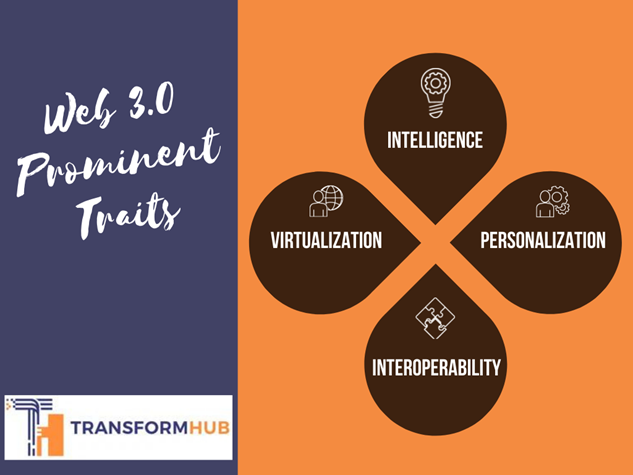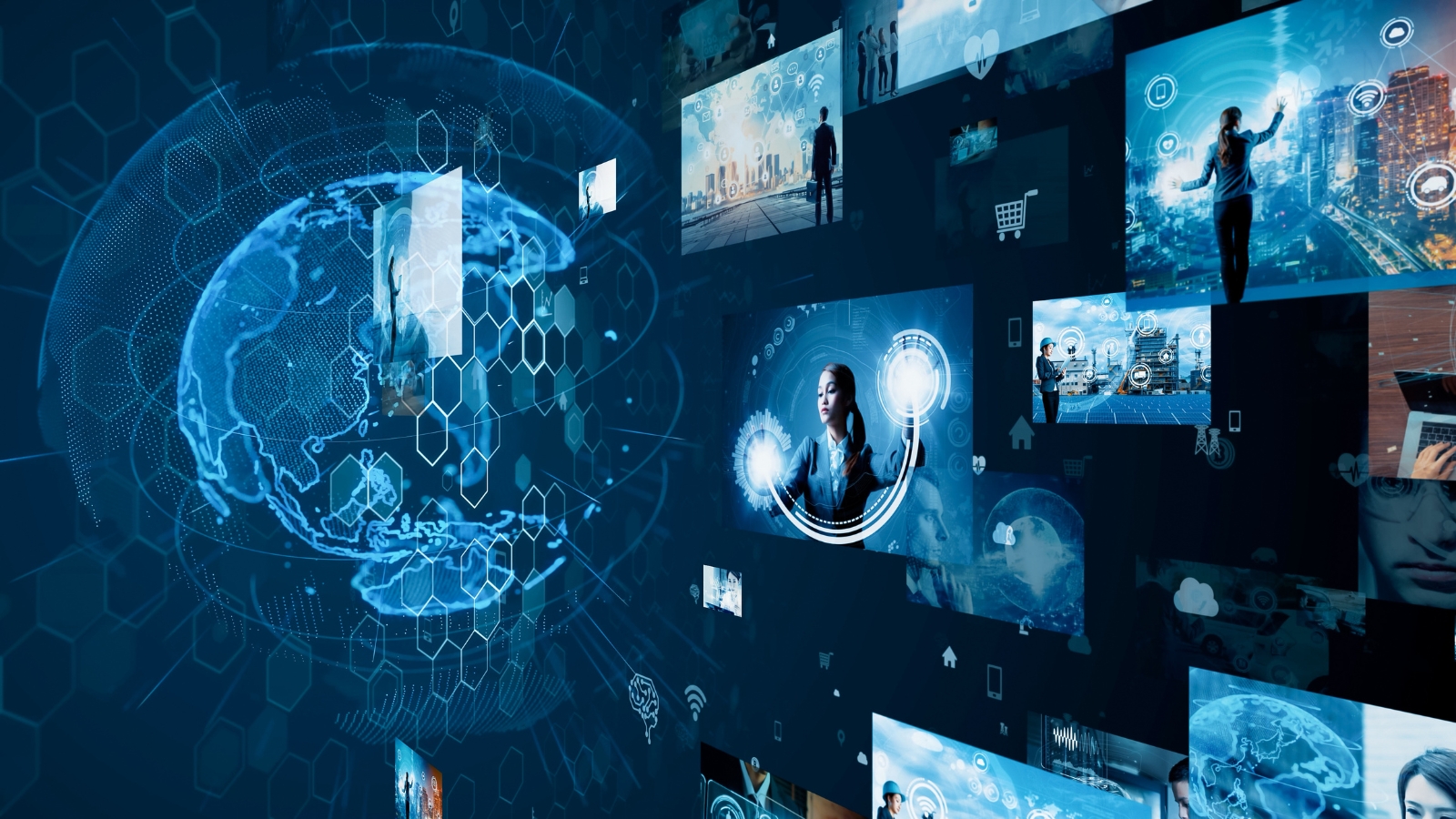Web3.0 - a Natural Progression or a Technology Boon
The journey from physical to digital was unimaginable when it arrived but today it's impossible to live without it. The Internet turned a new leaf in the history of mankind connecting cultures, thoughts, and people across the world.
We are now witnessing the evolution of Web 3.0 that is defined by next-gen web applications that thrive on modern technologies like blockchain, Artificial Intelligence (AI), Internet of Things (IoT), augmented reality (AR), and virtual reality (VR). In fact, these technologies form the core technology stack of enterprises that are reimagining new ways to connect, communicate, and collaborate in the digital world.
Personal assistants like Siri and Alexa continue to assist us with the smallest of chores thanks to AI-enabled capabilities. Cars and machines, on the other hand, now talk to each other owing to IoT integration. Blockchain has paved new modes of transactions and is fortifying supply chains across the globe.
The modern Web 3.0 is resilient and censorship-resistant. Web 3.0 is still nascent and yet brimming with opportunities. So let’s find out what it’s all about and what’s in store for us.
The Web evolution
The early phase of the Internet was that of Web 1.0 where an interconnected computer system served as a collaborative medium for people and businesses to meet and exchange ideas.
The dot-com explosion soon followed, and individuals, as well as governments, began to consume content to a great extent. It was the era of Web 2.0 wherein the web was now a platform and software applications lived on the Web.
People were now active content creators too contributing content generously via social media, blogs, and sharing sites. User-generated content soon became the norm. Web 2.0 thrived on a business model that allowed user-generated content to be sold to third parties for the sake of marketing.
We soon became comfortable in the digital world dominated by the likes of Google, Amazon, Facebook, and their centralized apps that built their own audiences and followers through targeted advertising. In fact, centralization and exploitation of data played a big role in Web 2.0.
A few years later, Berners-Lee came up with the concept of the Semantic Web where machines would process content just like humans. But there were plenty of apprehensions concerning this model. After all, the context was extremely crucial for comprehension. Without context, how would a machine know if it’s Jaguar the car or Jaguar the animal?
Later, a new version of the Internet came into being that lacked the central controlling node and you no longer needed permission to post anything. It’s what we call Web 3.0.
The next era of computing
Web 3.0 got its name from John Markoff of the New York Times in 2006 as several attempted to define it.
Speaking of Web 3.0, Tim Berner Lee said, "People keep asking what Web 3.0 is. I think maybe when you've got an overlay of scalable vector graphics - everything rippling and folding and looking misty-on Web 2.0 and access to a semantic Web integrated across a huge space of data, you'll have access to an unbelievable data resource.”
Reed Hastings, the Netflix founder, described it in a very interesting manner stating, "Web 1.0 was dial-up, 50K average bandwidth; Web 2.0 is an average 1 megabit of bandwidth and Web 3.0 will be 10 megabits of bandwidth all the time, which will be the full video Web, and that will feel like Web 3.0.”
A technological high, Web 3.0 is a fresh departure from Web 2.0's rigid, centralized, exploitative world. It normalizes decentralized infrastructure and application platforms putting the control into the hands of individuals who rightfully own their data. Web 3.0 is more focused on the use of appropriate technologies to ensure every user has access to relevant content. This new immutable, censorship-resistant version is the harbinger of new opportunities and exciting possibilities.
The already blurring lines between our digital and physical worlds are becoming almost non-existent with technology taking over in all fields globally. Surgeons are leveraging holographic anatomic models during surgical procedures while manufacturing companies are using IoT and AR to increase operational efficiency. Similarly, 3D digital twins are now part of city planning enabling better decision-making. Web 3.0 is also referred to as Spatial Web where digital information will exist in space, integrated and inseparable from the real world thanks to the growth and convergence of enabling technologies.
Web 3.0 urges enterprises to deploy these technologies to enhance or augment the capabilities of their people, processes, and machines. There are plenty of use cases that demonstrate the effective use of emerging technologies. The insurance sector for instance is leveraging IoT to help consumers mitigate risks. Fintechs are using Application Programming Interfaces (APIs) enabling open banking to consumers. In the UK alone, over 2.5 million UK consumers and businesses are now leveraging open banking offerings to manage their finances and payments.
Blockchain is already an important aspect of FinTech and a recent poll by JPMorgan reveals that 22% of the respondents confessed their organizations were eager to invest or trade in cryptocurrencies. TRGC recently unleashed the immense potential of blockchain by opening its doors to outside investors to garner support for their early-stage blockchain projects. BNY Mellon has revealed its plans to offer integrated service for managing digital assets demonstrating its eagerness to adopt new technologies to innovate the cryptocurrency space.
Prominent traits

Web 3.0 comes with its own set of characteristics that also iterate its role in the technology landscape. The most prominent ones include:
- Intelligence - We can look forward to an intelligent web in the near future as applications will work intelligently using Artificial Intelligence-based tools and techniques. They would offer intelligent analysis to ensure an optimal output with minimal human intervention. Interestingly, users get to communicate in their native language for effective communication.
- Personalization - Personal or individual preferences will enjoy precedence and will be a strong consideration while planning activities, streamlining processes, and designing products.
- Interoperability - There is a strong correlation between collaboration, reusability, and interoperability when seen in the context of this new era of computing. So while staying connected in an integrated Web 3.0 environment, applications can be customized to run independently on all kinds of devices.
- Virtualization - High-speed Internet bandwidths and high-end 3D graphics are a given in the context of Web 3.0. Businesses can create virtual 3-Dimensional environments and simulated settings.
Preparing for Web 3.0
The Spatial Web era is helping forward-thinking business leaders improve interactions and enable highly contextualized experiences. While it continues to evolve on its path to maturity, you can certainly prepare yourselves for the long haul to reap benefits and actively participate in its evolution.
Here’s what you can do.
- Keep an eye on the future - You may be already leveraging some or all of the technologies that have been ushered in by Web 3.0. But it's easy to get wrapped up in short-term goals and lose sight of the end goal. Make sure you stay focused to improve operational efficiencies. If you are using technologies to create new products, make sure that you leverage them all the way right up to marketing and customer support to harness the benefits.
- Tap into IoT sensor data - The easiest way to optimize operations in any business is to increase its operational awareness. Luckily, you have IoT-enabled sensors and devices to gather data, be it from banks and hospitals or cars and planes. The data so gathered can offer useful insights to help you manage complex business needs and create satisfactory customer experiences.
- Establish standards to ensure interoperability - It's time you got a firm perspective to decide the direction in which you wish to navigate your business. A thriving business requires support from its business communities along with ethical standards that can enable interoperability across applications. Make sure you establish these standards early on to become an engine of growth and development for your organization and society.
In closing
The limitations of Web 2.0 will cease to exist as transparent, peer-to-peer communications will take over. Web 3.0 will bring in true sovereignty that will allow individuals to take total ownership of their time and information. Web 3.0's decentralized environment will ensure they are fairly compensated for their time and data thereby putting an end to the exploitative ways of its predecessor.
Share this
You May Also Like
These Related Stories

Why Digital Transformation is Needed More Urgently Than 10 Years Ago?

How digital wallets open new possibilities for business and customers






